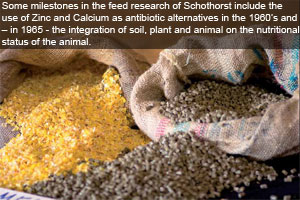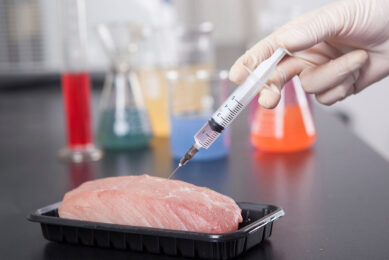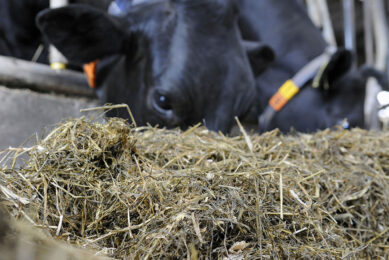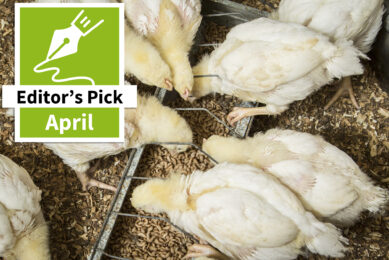Schothorst Feed Research: 75 years of knowledge

Schothorst Feed Research in the Netherlands celebrated its 75thanniversary with an inspiring two day event held 12 and 13 May.
By Emmy Koeleman
Piet van der Aar, Director of Research at Schothorst opened the event by addressing that the current crisis is “nothing new”. He mentioned that 75 years ago, the agricultural sector experienced a crisis in the form of overproduction, lack of knowledge and poor feed efficiency. Not all vitamins had yet been discovered and also some essential amino acids were not known. At that time, Schothorst Feed Research was established in the Netherlands to fill the gap in the lack of nutritional knowledge. Until now, the institute has carried out a number of fundamental and practical research studies of which some of them were presented during the symposium together with important topics that the feed industry faces today.
Revision of feed rules
One of the most important (and complex) issues in the animal feed industry is the correct categorisation of feed additives. For decades there has been legislation on feed additives in Europe. In the 1970’s, the basis of the present legislation was developed and laid down in the famous Directive 70/524 and since January 2006 in the Directive 1831/2003. These rules are constantly under revision to improve and simplify them. Willem Penning, head of feed at the Directorate Animal Health and Welfare at the European Commission (EC) gave a clear update on the current feed legislation issues. He addressed that the rules will be re-evaluated in 2010, a process that the EC has just started. According to Penning it must be fully clear whether we are dealing with a feed material, a feed additive or an in-feed veterinary medicine. Any borderline issues can not be tolerated any more and also pet food should be included in the current animal feed rules he said. Regarding the issue of re-introducing meat and bone meal, Penning said: “Meat and bone meal is valuable protein and should not be wasted. However, we need a good system to detect traces of meat and bone meal. Only then we can decide whether we can reintroduce them in some sort of way. This will strongly depend on the EU commissioner in place.”
Dairy rollercoaster
The dairy sector – and in particular the milk prices – is also an issue which is constantly at the forefront in the livestock sector. Torsten Hemmen, chairman of the International Farm Comparison Network (IFCN) gave an insight in the current market situation of the international dairy sector. He started with comparing the situation to one in which farmers, processors and consumers are sitting in a rollercoaster; prices are fluctuating like crazy. He said that milk will be the most volatile product in the future (such as cacao is now).
The problem is that most dairy farmers are too dependent on the milk processors for their income. Hemmen said that these farmers should look for ways to use their land for different purposes (such as biofuel). Hemmen mentioned that New Zealand is leading in terms of efficient cost saving. Through less kilograms of milk per cow and good feeding strategies, New Zealand dairy farmers are gaining more profit than EU and US farmers who always go for the maximum production per cow. He also explained that we have to search for sustainable dairy farm types which can meet the farmer’s income goals, compete internationally, compete locally for land and labour and meet new climate standards regarding methane and carbon dioxide emissions.
Hygiene hypothesis
At the symposium there was also room for some more fundamental and technical talks. Microbiota, the immune system and their interrelationship was explained by Denise Kelly from the Rowett Research Institute in the UK. She explained her studies on the hygiene hypothesis; a school of thought that argues that increased hygiene and a lack of exposure to various micro-organisms may be affecting the immune system of animals to the degree that they are losing performance. This hypothesis is an ongoing discussion in humans, but also animal scientists are questioning how this applies in intensive animal production systems. In her speech she questioned whether it is better to keep pigs in a fully clean environment or in a ‘dirty’ environment.
A study that Kelly presented at the symposium was a trial that she did in neonatal piglets. She showed that the rearing environment has a fundamental effect on microbiota, in favour of the piglets raised in the outdoor sow reared (dirty) environment. And a healthy gut and balanced microbiota means a stronger immune system, less diseases and better animal performance. These data lean towards the fact that it is better that pigs are hygiene challenged. However, still many animal scientists have different ideas about it, and in terms of disease prevention the industry tends to go for the cleanest option. Animals that are hygiene challenged may have a poorer animal performance as more energy is needed to fight the environmental bugs. Andrew van Kessel from the University of Illinois in the US talked about the microbial mechanisms in the animal gut. He compared different types of barley to see the effects on the microbial population in the gastro intestinal tract. As we only know 20% of the bacteria in the gut (the rest we can not detect with our current detection methods), this area – and many more – should therefore be explored more in the future. Research institutes such as Schothorst are therefore key in exploring the potential of nutrients, learning more about the link between animal feeding and the immune system and health.
Other speakers included Bernard Raynaud (InVivo), Bruno Goddeeris (University of Ghent), Guoyao Wu (Texas A&M University), Jean Paul Lalles (INRA), Paul Bikker, Wilfried van Straalen, Jan Dirk van der Klis (Schothorst), Daiwan Chen (Sichuan Agricultural University), Steven Ricke (University of Arkansas), VeerleFievez (University of Ghent) and Garrett Oetzel (University of Winsconsin).
Source: FeedMix vol 17 nr 4, 2009
Join 26,000+ subscribers
Subscribe to our newsletter to stay updated about all the need-to-know content in the feed sector, three times a week. Beheer
Beheer









 WP Admin
WP Admin  Bewerk bericht
Bewerk bericht